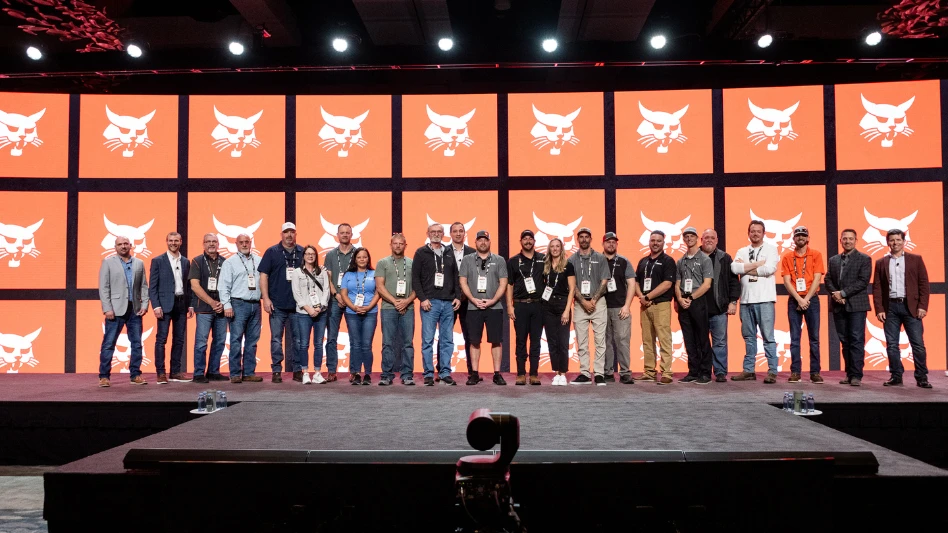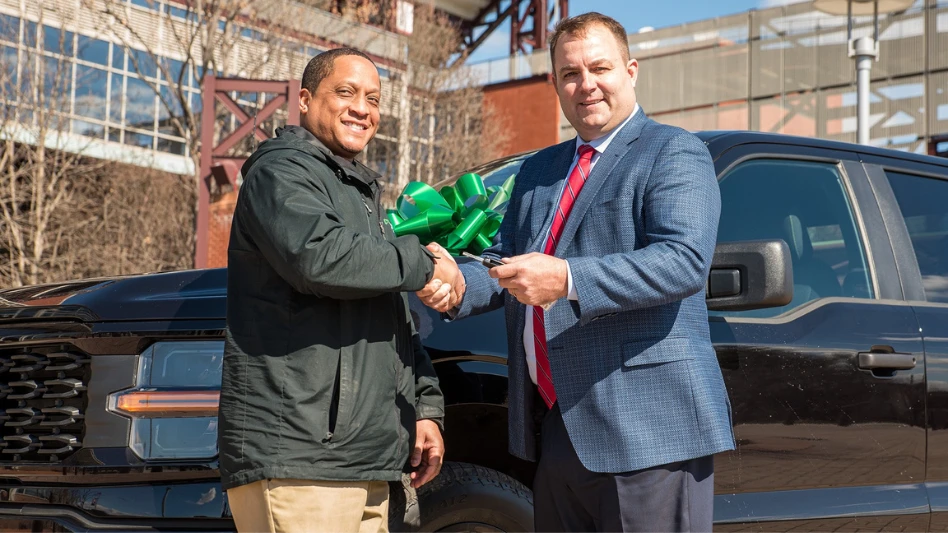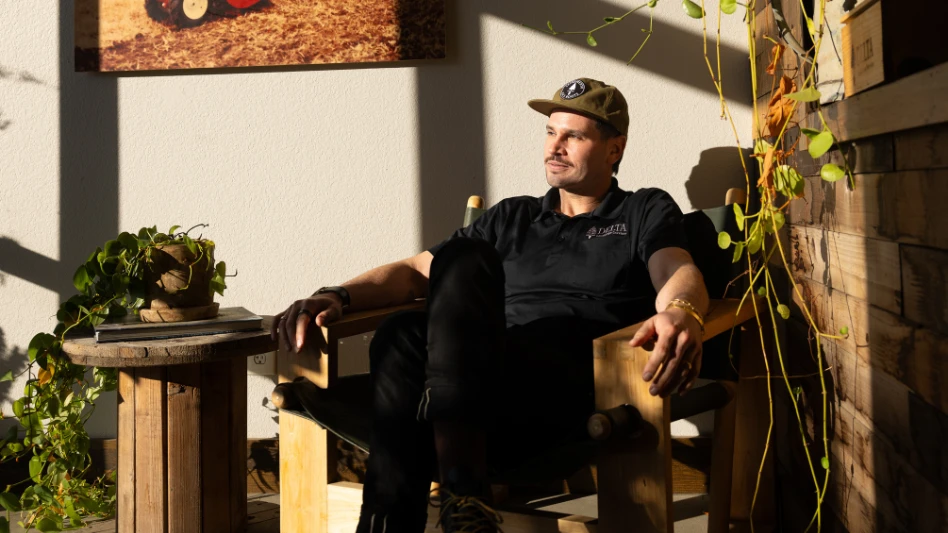Here today, gone tomorrow is the philosophy associated with many of today’s technological tools. Computers become obsolete in a year’s time and cellular phones that can perform new, often unbelievable, functions are available everyday. Cars that can’t tell you where to go are old news, and people are replacing standard TVs with ones that can hang on the wall.
However, if it ain’t broke, don’t fix it seems to be the mentality most commonly associated with irrigation systems. Despite the new advancements available, irrigation system upgrades are often last on many technological “to do” lists. “It can be a process to get people to upgrade their irrigation systems,” says Mark D’Alonzo, vice president of Cow Bay Sprinkler Co., Port Washington, N.Y. “They’ve had it in the ground for so long and it seems to have been working fine in their eyes.”
But the truth is, most irrigation systems installed 15 or 20 years ago use too much water inefficiently. By upgrading to a newer system, less water can irrigate plants and turf more effectively in less time, saving homeowners money on their monthly water bills and saving irrigation contractors time from having to repair out-of-date irrigation systems.
Not only do technological advancements in irrigation systems make an upgrade a money-saving investment, the recent emphasis on water conservation may soon make it a mandatory one. The service can not only be profitable for irrigation contractors, but it’s also beneficial environmentally. “We suggest upgrades to irrigate more efficiently, as well as to save the homeowner money on water usage and benefit plant material,” D’Alonzo says. “It’s not always an easy sell, but once clients are informed, they tend to open up their minds to it and see the benefits.”
SOMETHING OLD, SOMETHING NEW. Many of the irrigation systems D’Alonzo encounters that are in dire need of an upgrade were installed 15 or 20 years ago, he says. These systems were basically installed to replace the hassle of a manual sprinkler. “The way older systems were installed wasn’t focused on just watering the plant material and the lawn, it watered everything – the front walk, the house, you name it,” he says. “Now that the industry is so focused on water conservation, we don’t want water everywhere. To upgrade, we usually have to go back and redesign most of the system.”
Doug Heller, owner of Northwest Iowa Sprinkler, Milford, Iowa, says the decision to upgrade also can depend on whether or not the system’s pieces and parts are still manufactured. “Sometimes we have to upgrade the system because the equipment is outdated and no longer produced,” he says. “If the homeowner wants to change their landscape, we have to change their irrigation system using available components.”
Another common reason for an upgrade is that the landscape has simply outgrown the irrigation system that was initially installed, says Bill Knight, owner of Knight-Scapes, Yorktown, Va. As bushes and trees become bigger or beds are added, more irrigation zones may be needed to sustain the growing landscape. “In some cases people have to add additional zones because of different or changing landscapes,” he says. “This can also result in the upgrade to a controller that has the capacity to handle more stations.”
Still another common reason for a system upgrade is because the first system was poorly designed or poorly installed. “In some cases we know a system needs upgraded as soon as we turn it on,” Knight says. Some clues are pipes located too close to the surface, improper head placement resulting in inadequate watering and a lack of check valves.
An irrigation system upgrade can be as simple as changing to a new style of head or as involved as changing from sprinkler to drip irrigation, Heller says. Upgrades differ from general maintenance, which includes system startups, head and controller adjustments, nozzle cleanings and general checkups. Most irrigation companies offer winterization in their maintenance packages as well. “Generally, maintenance is servicing the existing system and its parts, and upgrading entails replacing all or part of a system with components that work better,” Heller explains.
There are certain signs irrigation contractors can watch for that indicate an upgrade on a client’s system is in order. Dry or soggy patches of plant material and failure of parts on a consistent basis are a few, D’Alonzo says, adding that he likes to take a proactive approach by stressing an upgrade after he’s received two to three service calls for problems like broken heads. “Heads are usually the first parts to go, followed by valves and then controllers,” he says. “Instead of nickel-and-diming the customer by changing one part every few months, we try to get them to upgrade the entire system in one shot.”
WHY THE HESITATION? Sounds easy enough. So why can irrigation system upgrades be difficult to sell? One of the primary reasons clients decline system upgrades is because they don’t see a need for it, D’Alonzo says. “Your clients don’t go to trade shows or read up on the newest irrigation trends,” he says. “They’re happy with what they have and aren’t aware of the reasons why they should improve it.”
Along these lines, many times people aren’t comfortable with change. With upgrades like drip irrigation, which takes place underground, people can’t visually see the system working like they could when water was everywhere. “I’ve found that people like to see the water spraying because that’s what it takes for them to know it’s working,” he says. “It’s hard for them to reach that same comfort level without seeing it working, because, in their mind, it’s not.”
Another common response is “We’ll do it next year,” Heller says. “Clients often try to rationalize that the summer is already half-way over, or it hasn’t been very hot or dry this year or it’s been rainy lately, so why bother.”
To avoid this back-burner mentality, D’Alonzo says June and July are the best months to do irrigation system upgrades, which also serve as a way to fill time after the busy spring startup and new install rush and before winterizations begin. “We do our startups from April to May,” he says. “Doing upgrades during that down period from June to July is a good way to bring in extra revenue. Any later than that and people begin thinking that summer is basically over so they’ll just do it next year.”
SALE AWAY. Heller sells most of his upgrades to his existing customers who come to him and ask for them after being introduced to the idea by his technicians during routine maintenance visits or by reading the company’s informational brochures. The real selling point is the money they will save on their water bills, which can be as much as 50 percent, he says. “After a client shows interest, I go out and physically inspect their property. During this visit, I explain to them the reasons for water restrictions and also discuss the rising price of water,” he says. “I show them an estimate of their savings and they see that the system will really pay for itself in nine or 10 months.”
D’Alonzo agrees that irrigation upgrades can be a great add-on service and that an existing customer base is the best place to market the service, as new clients get up-to-date systems installed rather than old ones revamped. Both companies distribute general information about efficient irrigation in the form of fliers, newsletters and pamphlets at the same time they send out start-up reminders and maintenance notices. Winter and early spring is the best time to do this, Heller says, because it gets people thinking about the summer months ahead.
Both men also encourage their technicians to establish dialogues and relationships with their clients during routine visits to create a level of trust. “We begin an upgrade sale with the technician informing the client that there are ways we can improve their existing system, such as by installing drip irrigation,” D’Alonzo says. “They prime the pump and then report to me which clients seem interested.”
After a client expresses interest, D’Alonzo figures up an estimate and pays a visit to the client to “tie together the meeting” with the technician. “I think this involvement shows my clients that I’m not just a guy servicing sprinklers, but that I’m involved in the industry and knowledgeable about cutting-edge technology,” he says. D’Alonzo sees an annual success rate of about 50 percent of his clientele who invest in an upgrade.
Heller spends anywhere from $1,000 to $2,000 on marketing costs each year and says it varies based on how many customers he has to send information to. He designs the fliers and sends them to a printing company for production. “Printing and mailing costs can add up pretty fast,” he says. “But if you do it right, you can pay yourself back 20 times over.”
Knight doesn’t do any advertising and gets all of his business from customer referrals, he says. As an incentive for his customers to refer his company to their friends and family, Knight offers a refund of 50 percent of the price of their maintenance contract, which amounts to $65 to $125 depending on how big their system is. “Our clients see that as a great dinner out or a really good bottle of wine,” Knight says. “Our referral system works out very well for us.”
PERSONAL PRICING. Because each upgrade is different depending on the condition of the irrigation system, pricing the service can be difficult, D’Alonzo says. “We charge on a per-call, per-house basis,” he says. “The needs of each system will be different so we can’t really work it into a regular maintenance plan; rather, we have to tailor each upgrade specifically to the client.” An average upgrade of a mist system to a drip system costs between $850 and $1,000, he says.
Heller also prices his upgrade services on an individual basis. He goes out and inspects each property to see what exactly will be necessary to get the landscape in healthy condition and considers the number of heads, property size, number and type of controllers and the number of zones. The cost of an average residential upgrade of new heads, controllers and valves can range from $1,500 to $2,000, he says. “When it comes to upgrades, each client is different,” he explains. “We first have to physically see the property and take note of dry spots and things like that.”
Knight usually considers an upgrade a type of maintenance and prices the services similarly, which includes an hourly rate plus the cost of parts. The hourly rate for Knight’s two-man crews consists of $65 for the crew leader and $25 for a technician, or roughly $100 an hour. Rotary heads can cost from $12 to $15 each and spray heads can cost from $4 to $5 each, depending on where they are purchased. Because most of the plastic parts are oil-based products, the cost of the service can increase as the price of oil increases, Knight says. “We don’t add a gas surcharge onto our services, so we make a little profit off of the cost of parts,” he explains.
GETTING IT DONE. An average irrigation system upgrade takes about half a day, Heller says, and either his installation or maintenance crew has the skills necessary to do each job. “The guys on the install crew do this day in and day out, so they take on the major upgrades like replacements of all the heads,” he says.
D’Alonzo’s company has a regular account with a local bank that requested the installation of a drip irrigation system. His technicians were then required to learn how to install and operate drip irrigation, which means his two-man crew can service all of the company’s irrigation accounts. To keep them fresh, D’Alonzo pays for his technicians to attend classes offered each year through the Irrigation Association and irrigation manufacturers. The classes are offered in both English and Spanish to benefit all of his employees.
Although there’s a little legwork involved to inform customers of the benefits, irrigation system upgrades can be a beneficial add-on service in more ways than one. Utilizing the new irrigation products available is just one more way to stay up on the latest technology. “The older systems out there are practically from the stone age,” D’Alonzo says. “It’s all about customer education and taking the time to explain to the client all of their options.”

Explore the May 2007 Issue
Check out more from this issue and find your next story to read.
Latest from Lawn & Landscape
- Coxreels expands V-100 Series product line
- Landscape Workshop expands with 2 acquisitions
- Wilson360 adds Daniel Grange as new consultant
- Batman and business
- CH Products releases new tree stabilizer
- Savannah Bananas founder Jesse Cole to speak at Equip Exposition
- Catch up on last year's Benchmarking report
- Davey Tree promotes Kevin Marks as VP of Western operations





